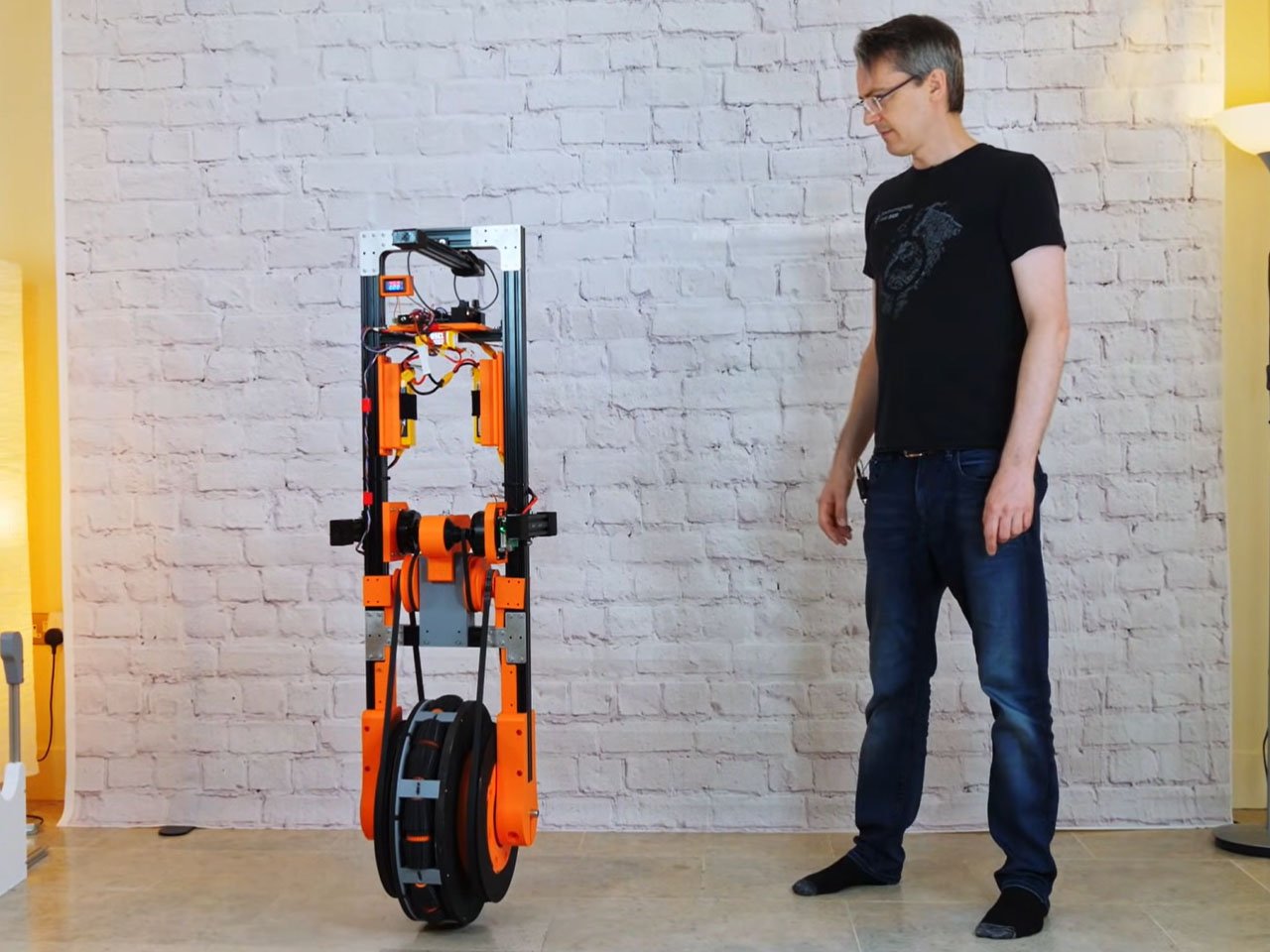No one does crazy DIY on wheels like James Bruton, who’s got a knack for putting together machines that have never existed on the face of the planet. The Star Wars Speeder Bike that moves sideways, the omnidirectional Screw Bike, and Ball-Wheeled Bike are testaments to the ingenious builder’s craft. Now, James is back again with yet another omnidirectional wheeled wonder that has you longing for more.
The smart unicycle (well, that’s what I prefer calling it) is a single-wheeled robot that is unlike other options that you can buy. As obvious, it is completely hand-built and requires a lot of tinkering to achieve the balanced physics, since the ride is just a single wheel. The wheel is twice as big – in terms of scale – compared to his other projects, to make it easy for the whole balancing act. The reason: bigger objects are easier to balance compared to smaller ones as the center of gravity is lower.
Designer: James Bruton
Most of the DIY project is 3D printed, giving James a lot of freedom to create the custom parts required for the complex robot. The main wheel is made up of eight smaller wheels, each having 2 TPU tires, that toggle the inertia of the machine to drive smoothly. To create the main wheel, James 3D printed the two outer recesses of the wheel that comprise the complex gears and pulleys to put the whole mechanism in place. The main gear mechanism has intermediate pulleys that integrate with the central pulley, keeping the whole system together. All the hubs fit on the piece of plywood that has a bearing for the middle gear to spin and a retainer to hold it. All the gears mesh well together, and the two housings of the wheels secure them in place.
There are eight pairs of idlers, each with two bearings on each of the assemblies. This makes the whole thing run smoothly without any friction, and even the transition to reverse motion is buttery smooth with this mechanism in place. The rest of the One-Wheel Robot is a big frame made out of Aluminium extrusion, which was a whole lot easier for James to figure out. The electronics are fitted at the top, and the two batteries, outputting 50 Volts are below that. Everything else is wired in and assembled into the unit. The balancing is actuated by the integrator which toggles the output power to the wheels based on the movement of the wheel. Pushing the thing brings back the self-balancing robotic wheel to its initial position, and later on, the DIYer added a remote-controlled mechanism to drive the wheel.
The project is a lead-up to another DIY in the works, which will be a passive omni wheel facing perpendicular to the active omni wheel that can be commuted on. Now that James has got the motion and balance sorted out, that DIY project should be a whole lot easier to finalize.
The post James Bruton creates omni-directional robotic wheel that self-balances even when pushed away first appeared on Yanko Design.

